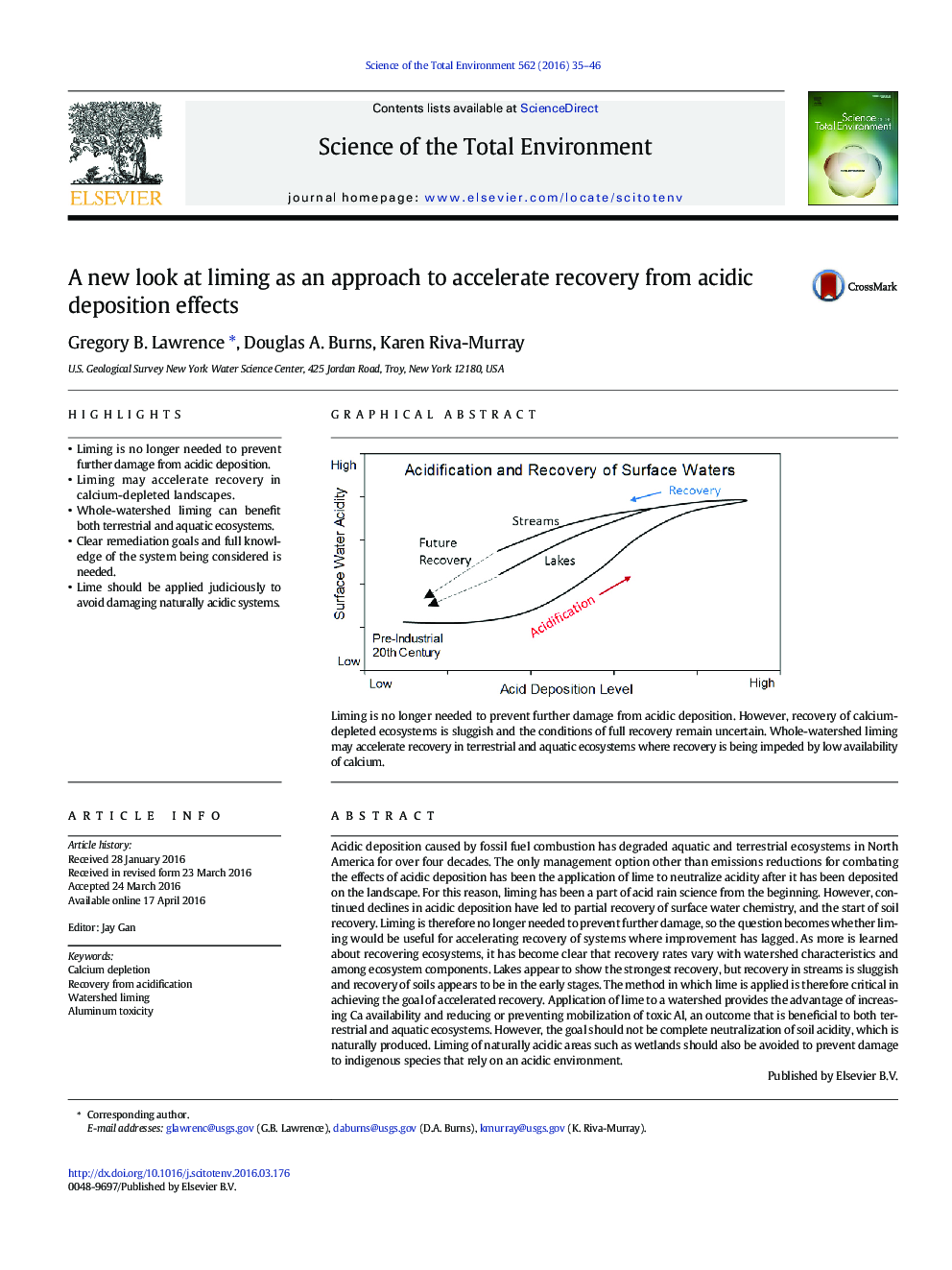| کد مقاله | کد نشریه | سال انتشار | مقاله انگلیسی | نسخه تمام متن |
|---|---|---|---|---|
| 6321622 | 1619726 | 2016 | 12 صفحه PDF | دانلود رایگان |
- Liming is no longer needed to prevent further damage from acidic deposition.
- Liming may accelerate recovery in calcium-depleted landscapes.
- Whole-watershed liming can benefit both terrestrial and aquatic ecosystems.
- Clear remediation goals and full knowledge of the system being considered is needed.
- Lime should be applied judiciously to avoid damaging naturally acidic systems.
Acidic deposition caused by fossil fuel combustion has degraded aquatic and terrestrial ecosystems in North America for over four decades. The only management option other than emissions reductions for combating the effects of acidic deposition has been the application of lime to neutralize acidity after it has been deposited on the landscape. For this reason, liming has been a part of acid rain science from the beginning. However, continued declines in acidic deposition have led to partial recovery of surface water chemistry, and the start of soil recovery. Liming is therefore no longer needed to prevent further damage, so the question becomes whether liming would be useful for accelerating recovery of systems where improvement has lagged. As more is learned about recovering ecosystems, it has become clear that recovery rates vary with watershed characteristics and among ecosystem components. Lakes appear to show the strongest recovery, but recovery in streams is sluggish and recovery of soils appears to be in the early stages. The method in which lime is applied is therefore critical in achieving the goal of accelerated recovery. Application of lime to a watershed provides the advantage of increasing Ca availability and reducing or preventing mobilization of toxic Al, an outcome that is beneficial to both terrestrial and aquatic ecosystems. However, the goal should not be complete neutralization of soil acidity, which is naturally produced. Liming of naturally acidic areas such as wetlands should also be avoided to prevent damage to indigenous species that rely on an acidic environment.
Liming is no longer needed to prevent further damage from acidic deposition. However, recovery of calcium-depleted ecosystems is sluggish and the conditions of full recovery remain uncertain. Whole-watershed liming may accelerate recovery in terrestrial and aquatic ecosystems where recovery is being impeded by low availability of calcium.146
Journal: Science of The Total Environment - Volume 562, 15 August 2016, Pages 35-46
